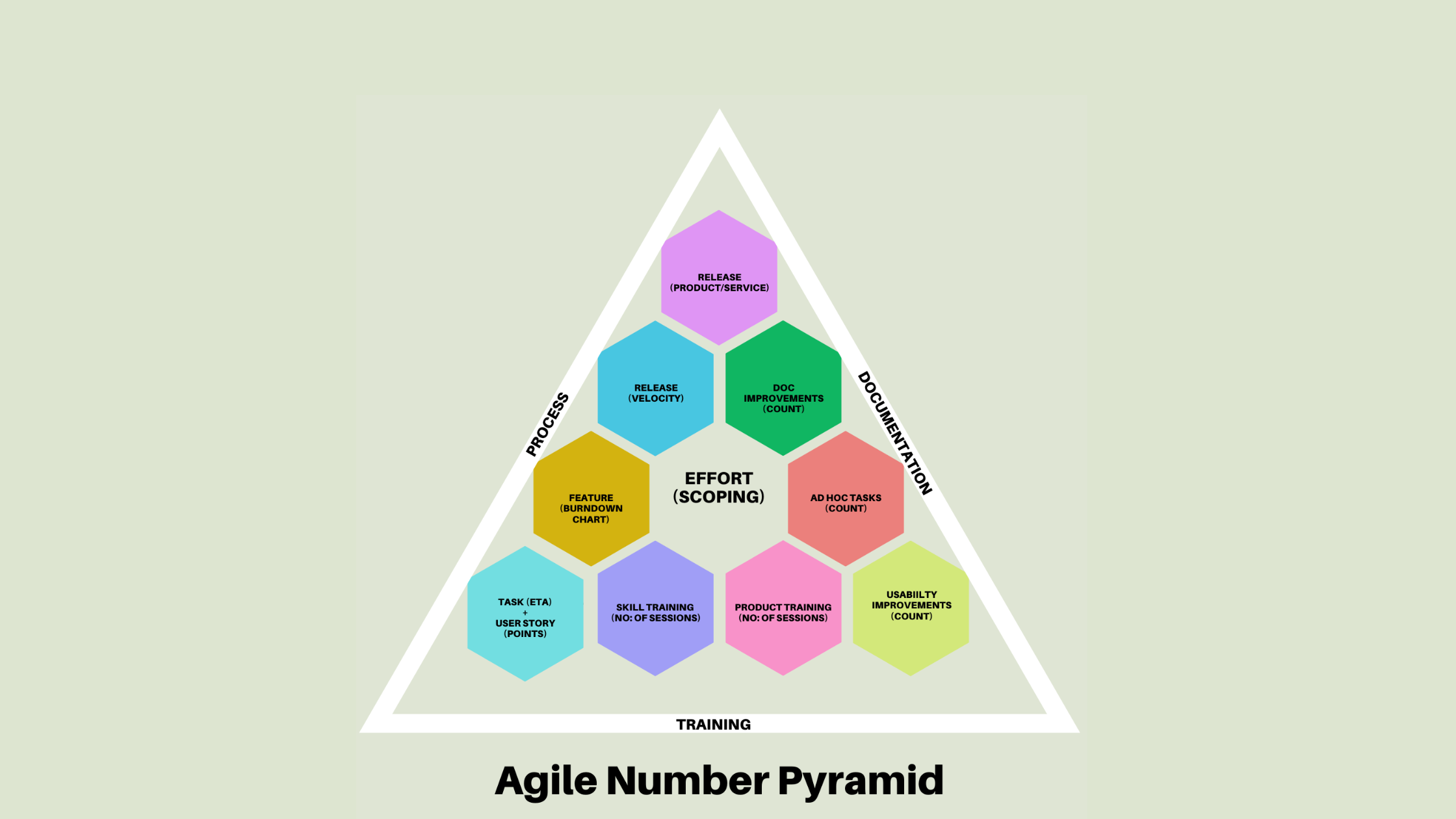Unleashing the Power of Numbers for Agile Docs
 Adityan S
Adityan S
Documentation as a Key Deliverable
The data from a study (UserTesting, 2023) suggests that 78% of users evaluate the quality of a product based on its documentation. Another research (Atlassian, 2022) points out that clear documentation can reduce the onboarding time for new hires by an average of one hour. But, is agile documentation just another dreaded oxymoron? Many developers still consider it as an afterthought, a dusty relic in the fast-paced world of sprints. Failure in establishing the significance of numbers involved in the budgeting and estimation of documentation development and delivery makes it remain undermined. This article analyzes the role of numbers in a documentation delivery lifecycle and proposes methods for documentation teams to preserve and enhance their value as a vital deliverable.
Harnessing the Power of the Agile Number Pyramid
Agile estimation is reliant on numbers to a great degree. Teams discuss and predict effort and commitment, determine the size of each task, and even quantify time. Agile practitioners who can accurately predict critical numbers contribute to the overall business value. The analysis of a user story can serve as an example of the numerical aspects involved in agile checkpoints.
Let us consider a user story, codenamed US1234. Numbers, such as the number of features, sprints, and team size, are essential for driving the business forward. Other values such as sprint duration, number of teams, scrum team size, sprint number, team velocity (achieved and committed), burndown chart and so on are equally critical. It is evident that numbers play a significant role throughout the agile documentation process.
Approaches for Documentation in the Agile Pyramid of Numbers
In the context of the agile number pyramid, documentation faces the challenge of remaining relevant and contributing to each stage of the process. To address this challenge, documentation teams should adopt a multi-pronged approach, focusing on different aspects:
Quality-driven approach: Incrementally improve content quality through periodic reviews and updates.
Usability-driven approach: Innovate content delivery to enhance customer experience, using analytics to quantify improvements.
Delivery-oriented approach: Improve customer engagement and satisfaction by adopting brand language and exceeding expectations.
The Limitations of Sustaining a Reproducible Agile Documentation Experience
Ironically, meeting the expectations of the scrum board can lead to a diminishing value of documentation over time. When the scope of documentation is defined solely by stakeholders outside of the documentation team, issues arise. As the agile team matures, stakeholders realize the need for improved documentation, causing stagnation in customer experience and usability. Documentation must proactively improve itself, rather than solely focusing on delivering feature content, to keep up with the demands of agile execution.
Planning for Unplanned Ad Hoc Documentation Tasks
Documentation must also account for unplanned or ad hoc change requests, which are inevitable in sizable customer-facing documentation projects. Accommodating these tasks within a sprint can be challenging, especially when the team has committed to a specific set of user story points. In such situations, leveraging numbers becomes crucial. By re-estimating work, identifying dependencies, and setting realistic timelines, documentation teams can navigate through unexpected tasks effectively.
Enhancing Documentation in a Mature Agile Environment
As teams gain more experience with agile, their skills improve through multiple release cycles. For documentation to mature in this agile experience, driven by numbers, certain perspectives must be considered:
Improving the agile experience, ultimately leading to better quality deliverables.
Process innovations: Improve documentation processes by involving external stakeholders and fostering collaboration.
Enhancing the experience of the team and its members: Introduce new ways of implementing agile, encourage idea generation, and recognize achievements.
Multi-skilled balanced team formation: Ensure a diverse range of skills within the documentation team and incentivize training and development.
Business awareness: Stay informed about product placement, future predictions, and competitor analysis for effective documentation.
Cross-functional team collaboration: Work in a team where roles can be exchanged, enhancing skills and overall productivity.
Conclusion: Achieving Results
The core objective of the agile experience is to transform potential into performance. To achieve this, documentation teams must focus on achieving concrete results and effectively communicate their value to stakeholders. Better planning and prioritization of documentation will lead to effective documentation. It can reduce the overall development costs by up to 15% (Techwell, 2021). By embracing the number-driven nature of agile, documentation can evolve and leave behind an improved documentation experience. The degree of result orientation that documentation teams achieve will determine their success in the agile landscape.
Subscribe to my newsletter
Read articles from Adityan S directly inside your inbox. Subscribe to the newsletter, and don't miss out.
Written by

Adityan S
Adityan S
Senior Content Specialist.